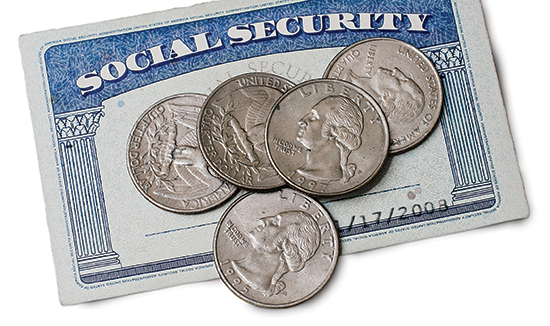
December-January 2016
Follow the Leader
------------------
|






Women and Social Security
By John Brummitt
In 1935, Franklin Delano Roosevelt signed the Social Security Act into the fabric of American life. Miss Ida May Fuller received the first benefit in 1940, in the amount of $22.54. Since that time, the program has grown to more than 60 million individuals receiving benefits. While average benefits have grown to $1,221 per month, or $14,652 per year, most Americans still don’t understand the best way to utilize social security in their retirement planning. Many individuals rely on social security to make up 35% or more of their retirement income.
While the history of the social security program may be interesting, it is not the main focus of this article. A recent study revealed that women receive less on average from their social security benefits than what they are allowed. This is not because of inequality in the system, but because the average woman retires at age 62, and full benefits are not available until age 66. In 2014, research into social security records discovered that 40.8% of all women began drawing benefits at age 62, and 65% were younger than 66. Only 2.8% waited until age 70 to begin drawing benefits. Age 62 has been the average retirement age for women for decades and remains relatively unchanged.
So, what is wrong with retiring and drawing benefits early? It is a common myth that if an individual draws benefits earlier, he or she will get to draw benefits longer, thus getting more money. Again, this is a myth, because people forget to factor in one thing—the penalty! If you retire at age 62, you receive a 30% reduction in your social security benefit. It you are drawing on your spousal benefit, it can be reduced by 32.5%. So, in a simple breakdown, you would have to draw benefits eight years longer to draw the same amount of money. Since the age difference between 62 and 66 is only four years, you can see that the math doesn’t work out. You won’t make up the money you lose by taking it early.
On the flip side, if you wait to draw benefits until after age 66, age 70 for instance, you receive an increase in your benefits as much as 32%. Again, only 2.8% of women wait until age 70 to begin drawing their benefits. By waiting until age 70, in 12 years you will receive the same amount from social security as you would in 16 years by taking it at age 66. Since life expectancy is around 86 for women, it might be worth delaying the time when you start receiving benefits. I understand not everyone has a choice. Sometimes, you have to take benefits in order to make ends meet, but if you have the option, don’t take the reduction.
Often, women also leave money on the table when it comes to spousal benefits. Social security allows you to draw on yourself or 50% of your spouse’s benefit amount when you start drawing. Even if you are divorced from your spouse, as long as you were married for ten years or longer, you can claim spousal benefits. The social security office will look up the amount for you. You just need to ask.
According to the National Women’s Law Center, nearly 2.9 million women in the U.S. over the age of 65 have an income below poverty level—more than double the 1.3 million men. One reason could be the reduction in benefits by not making it to full retirement age or not claiming the benefits that are the greatest advantage to them.
About the Writer: John Brummitt graduated in 2011 with an MBA from Tennessee Tech University. A 2004 graduate of Welch College, he has been with the Board of Retirement since the spring of 2006. He will become director in January 2016.
|
|

